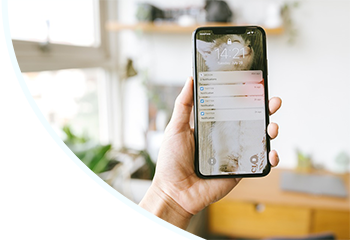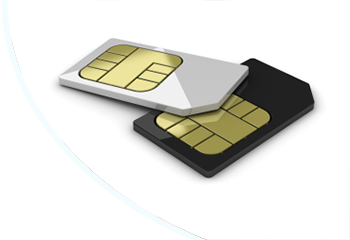Sony recently announced and revealed the latest iterations of their regenerated Xperia range, the Xperia 1 VI and 10 VI.
After the 1 V and 10 V both received rave reviews last year, there were a lot of expectations for the next generation.
Now it's here and while there have been cutbacks on some of the staple features that made the Xperia lineup, in particular the 1 VI, arguably the best-underrated phone on the market, it has been done to make the phones more appealing to a broader audience.
| Xperia 1 VI | Xperia 10 VI | ||
| Dimensions (HxWxD, mm) | 162 x 74 x 8.2 | 155 x 68 x 8.3 | |
| Weight | 192g | 164g | |
| Display | 6.5” LTPO OLED, 1080x2340px resolution, 120Hz, 19.5:9 aspect ratio, HDR, 396ppi | 6.1” OLED, 1080x2520px resolution, 21:9 aspect ratio, HDR, ~449ppi | |
Camera | Front | 12MP, f/2.0, 24mm (wide) | 8MP, f/1.8, 26mm (wide) |
| Rear | Triple camera: 48MP (wide, main), 12MP (telephoto), 12MP (ultrawide-angle) | Dual camera: 48MP (wide), 8MP (ultrawide) | |
| Video resolution | Front | 4K at 24/25/30/60/120 fps HDR, 1080p at 30/60/120 fps | |
| Rear | 4K at 30/60 fps, 1080p at 30/60 fps | ||
| Chipset | Qualcomm Snapdragon 8 Gen 3 | Qualcomm Snapdragon 6 Gen 1 | |
| Memory | 12GB RAM | 8GB RAM | |
| Storage | 256GB | 128GB | |
| Battery | 5000mAh | 5000mAh | |
| Features | Gorilla Glass Victus 2 glass front, Gorilla Glass Victus back, IP65/IP68 dust/water resistance, wireless charging, fingerprint reader, stereo speakers, native Sony Alpha camera support | Gorilla Glass Victus front, IP65/IP68 dust/water resistance, fingerprint reader, accelerometer, compass | |
| Price | £1299 | £349 | |
Xperia 1 VI positive cutbacks & upgrades
What the 1 VI did very well was bring a phone that avid camera enthusiasts would love, with a camera that was created using some of Sony’s awarded camera technology and a brilliant 4K display to match.
Sony has decided to steer away from the extra-long 21:9 4K display and replaced it with a more standard 19.5:9 120Hz FHD+ LTPO OLED panel, which helps aid extra power efficiency.
While on the face it seems like a downgrade, this is actually more of a positive than it looks on paper. The 4K display used to run in FHD resolution most of the time anyway as many apps and content weren’t compatible with the high resolution.
It also brought some promises from Sony for more upgrades to benefit the overal display, including higher brightness, better HDR video and, as already mentioned, better power efficiency.
On the battery efficiency side, while the battery itself hasn’t been upgraded, the cutbacks and the implementation of the new Snapdragon 8 Gen 3 chipset have delivered unrivalled battery life that not only outperforms its predecessor by some margin but also trumps Sony’s competitors. You’ll have to buy your own charger, though, as the box comes with no cable.
The cameras on the 1 VI remain very similar to the 1 V, a triple setup with a wide-angle primary, ultrawide-angle secondary and advanced telephoto camera with continuous optical zoom.

The highlight upgrade this year comes from the telephoto camera, which now has a longer zoom reach. The stepless optical zoom now goes from 3.5x (85mm) - to 7.1x (170mm) compared to the 1 V’s 3.5x - 5.2x (110mm).
There are also added macro modes to the telephoto and ultrawide camera, with the ultrawide one kicking in alongside the autofocus feature - basically, as soon as you get really close to a subject (up to 20cm), it will switch to the macro mode.
The camera app as a whole has also been overhauled. Where before there were multiple apps for different uses, there is now the standard one app, making it more intuitive and easier for casual users to understand and utilise the great camera setup of the phone.
Possibly the worst thing about the phone is to do with charging. Not only does a charging cable not come in the box, but the charging speed itself is a bit behind the curve.
In fairness, Sony phones are known for their slow charging speeds, and its no different this time around. Using Sony’s own 30 W charger, it took 30 minutes to charge to 50% and around 90 minutes for full charge from 0%.
That may be alright for some, but when compared to the Samsung Galaxy S24 Ultra, possibly the best alternative Android option out at the moment, it is quite down, as the S24 gets to around 69% in 30 minutes and takes about 65 minutes to charge to full from 0%.
In all, the Xperia 1 VI is a brilliant step up from last year's iteration and, despite a rather hefty price tag, it certainly deserves to be in the conversation of best out there.
More of the same from Xperia 10 VI
On the surface, the Xperia 10 VI, the newest addition to the mid-range Xperia option, isn’t a big step up from last year's phone, though thankfully it still packs the features that make the phone so great, such as solid battery life.
The dedicated 54mm zoom camera has been replaced with a software-powered 2x mode from the main camera. While that may seem like a loss, the light-gathering from the main sensor is now superior to before, so it isn’t as bad as at first glance.
Moving up from the Snapdragon 695 chipset, the new 4nm Snapdragon 6 Gen 1 chipset is employed to help in many sectors, including battery life from the 5000mAh battery and (finally) 4K 30fps video recording.
Measurements-wise it is the exact same as last year, although it is a few grams heavier at 164g.
The display remains the same too, measuring 6.1 inches in a 21:9 aspect ratio, using OLED technology and FHD+ resolution and limited to a 60Hz refresh rate.

The cost-saving comes from the phone body, which is still mostly plastic construction, though Sony’s efforts for planet conservation see more than 50% of the phone’s plastic parts made from recycled or environmentally friendly materials. The glass front remains though, with Gorilla Glass Victus providing an IP65/68 ingress protection rating.
One of the Xperia 10 series’ best selling points was its exceptional battery life. This year, the battery performance has been sacrificed compared to last year's 10 V, although this is so they could fit the much-needed chipset upgrade.
And unfortunately, just like with the 1 VI, the charging speeds are rather unimpressive. Using a 65W PD charger, you can expect around 20% charge from dead in 15 minutes, 36% charge in half an hour, while a full charge from dead will take a turtle-paces 1:53 hours.
At the end of the day, there are positives and benefits to the 10 VI. Sony has kept to some of the features that make it a great midrange phone, such as the cinematic 21:9 display and lightweight recycled material body.
However, it isn’t without fault, and the limited 60Hz refresh rate they insist on pushing for the 10 series is rather limiting in 2024 compared to the likes of Samsung’s equivalent mid-ranger, the Galaxy A55.










